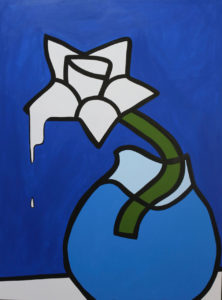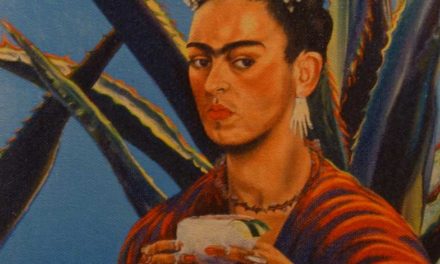By Dr. Ricardo Romo
Albert Gonzales, a native of San Antonio, spent his early childhood and teen years living in several southside and westside neighborhoods. He studied business at Lanier High School and graduated in 2009. His first jobs were in banking where he worked as a teller. He left banking and served as a clerk preparing insurance coverage data for a retail pharmacy.
 Gonzales drew and sketched in his spare time and was encouraged to become an artist by a total stranger who saw some of his drawings. He was intrigued by the idea of becoming an artist. Gonzales found desk work boring and decided to try his hand in creating art. After quitting his job, he began to paint. Unable to support himself as an artist, he spent months on the street sleeping at I-Hops and other retails stores that remained open at night.
Gonzales drew and sketched in his spare time and was encouraged to become an artist by a total stranger who saw some of his drawings. He was intrigued by the idea of becoming an artist. Gonzales found desk work boring and decided to try his hand in creating art. After quitting his job, he began to paint. Unable to support himself as an artist, he spent months on the street sleeping at I-Hops and other retails stores that remained open at night.
Upon selling his first paintings, he traveled to Philadelphia and New York to visit art museums and study the masters. In Philadelphia he saw a Henri Matisse painting of a vase with flowers that took his breath away. He returned to San Antonio and began a series of paintings what he titled “Wabi Sabi” which he describes
as a Japanese philosophy that can be translated to the idea of embracing the beauty of the imperfect, or in simple terms, perfectly imperfect.
 His works largely represent flowers floating in a transparent vase, and he explained that he uses “water to tell a story of life by keeping the water in the vase in a constant fluid motion even though the vase is on a flat plane.” One of these interpretations is in his example, “We all have our ups and downs in life.”
His works largely represent flowers floating in a transparent vase, and he explained that he uses “water to tell a story of life by keeping the water in the vase in a constant fluid motion even though the vase is on a flat plane.” One of these interpretations is in his example, “We all have our ups and downs in life.”
He considers his art as a visual interpretation of that Japanese philosophy where he creates what he views as “non-anatomically correct flowers to stand as a symbol meaning we are the flower. We all have our own imperfections or insecurities.”
When asked about his flower series, he elaborated that he liked to “use bold colors to encourage the viewer to look past the abstract and imperfect.” He has been successful beyond his own expectations, selling more than 400 flower canvas paintings in the last three years.







